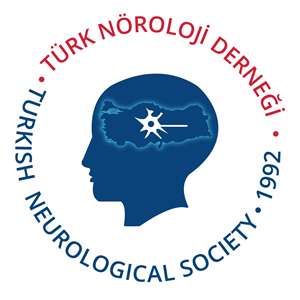Liquid embolization agents for arteriovenous malformations: A preliminary experience from a tertiary care teaching hospital
Himanshu Kaushal , Gourav Goyal
, Gourav Goyal , Yogesh Kaushik
, Yogesh Kaushik , Ira Chaudhary
, Ira Chaudhary , Jatinkumar Vijaykumar Jain
, Jatinkumar Vijaykumar Jain
Department of Neurology, Mahatma Gandhi Medical College and Hospital, Jaipur, India
Keywords: Arteriovenous malformations, embolization, Onyx, Squid-12, Squid-18.
Abstract
Objectives: This study aimed to assess clinical profile, arteriovenous malformation (AVM) characteristics, and outcomes associated with treatment.
Patients and methods: This retrospective descriptive study was conducted between June 1, 2021, and May 31, 2022. Twenty-seven patients (16 males, 11 females; mean age: 41.7±8.6 years; range, 15 to 65 years) diagnosed with AVM undergoing embolization within the defined period were included. The inclusion criteria were as follows: patients diagnosed with AVM on angiography and who underwent embolization for AVM. The exclusion criteria were as follows: patients in whom angiography did not show an AVM, those who refused to undergo the embolization procedure, patients who underwent surgical resection, and patients who underwent procedures for reasons other than AVMs (e.g., aneurysm coiling and flow diverter). Sessions of liquid embolic agent (Squid) embolization were performed. The procedural outcomes were classified as favorable and unfavorable outcomes. Complications were subdivided into technical, procedural, and clinical. Follow-up angiograms and clinical examination data were assessed.
Results: Majority (n=11) of the patients were older than 50 years. Most common presentation was intracranial hemorrhage. Common presenting complaints were headache, vomiting, loss of consciousness, and seizures. The majority of AVMs were classified as Spetzler-Martin Grades 3 and 4 (66.6%), followed by Grade 2 in seven cases, and Grades 1 and 5 in one case each. Majority of the AVMs were superficial (n=24). Embolization was done in two stages in six patients and in three stages in one patient. In the remaining 20 patients, single-stage embolization was attempted. There was a rupture of the zone of detachment of the detachable tip microcatheter in one patient, and there was leakage of liquid embolic agent in two patients. The most common complication was intraprocedural hemorrhage.
Conclusion: Embolization of AVMs with embolic agents such as Squid and Onyx as treatment option had satisfactory results, with obliteration achieved in most of the patients.
Cite this article as: Kaushal H, Goyal G, Kaushik Y, Chaudhary I, Jain JV. Liquid embolization agents for arteriovenous malformations: A preliminary experience from a tertiary care teaching hospital. Turk J Neurol 2025;31(3):301-309. doi: 10.55697/tnd.2025.365.
The data that support the findings of this study are available from the corresponding author upon reasonable request.
Idea and concept, design, data collection and processing, references: G.G., H.K.; Control/supervision: G.G., H.K., J.V.J., Y.K.; Analysis and interpretation, literature review, writing the article: G.G., H.K., J.V.J., Y.K., I.C.; Critical review: J.V.J., Y.K., I.C.
The authors declared no conflicts of interest with respect to the authorship and/or publication of this article.
The authors received no financial support for the research and/or authorship of this article.


